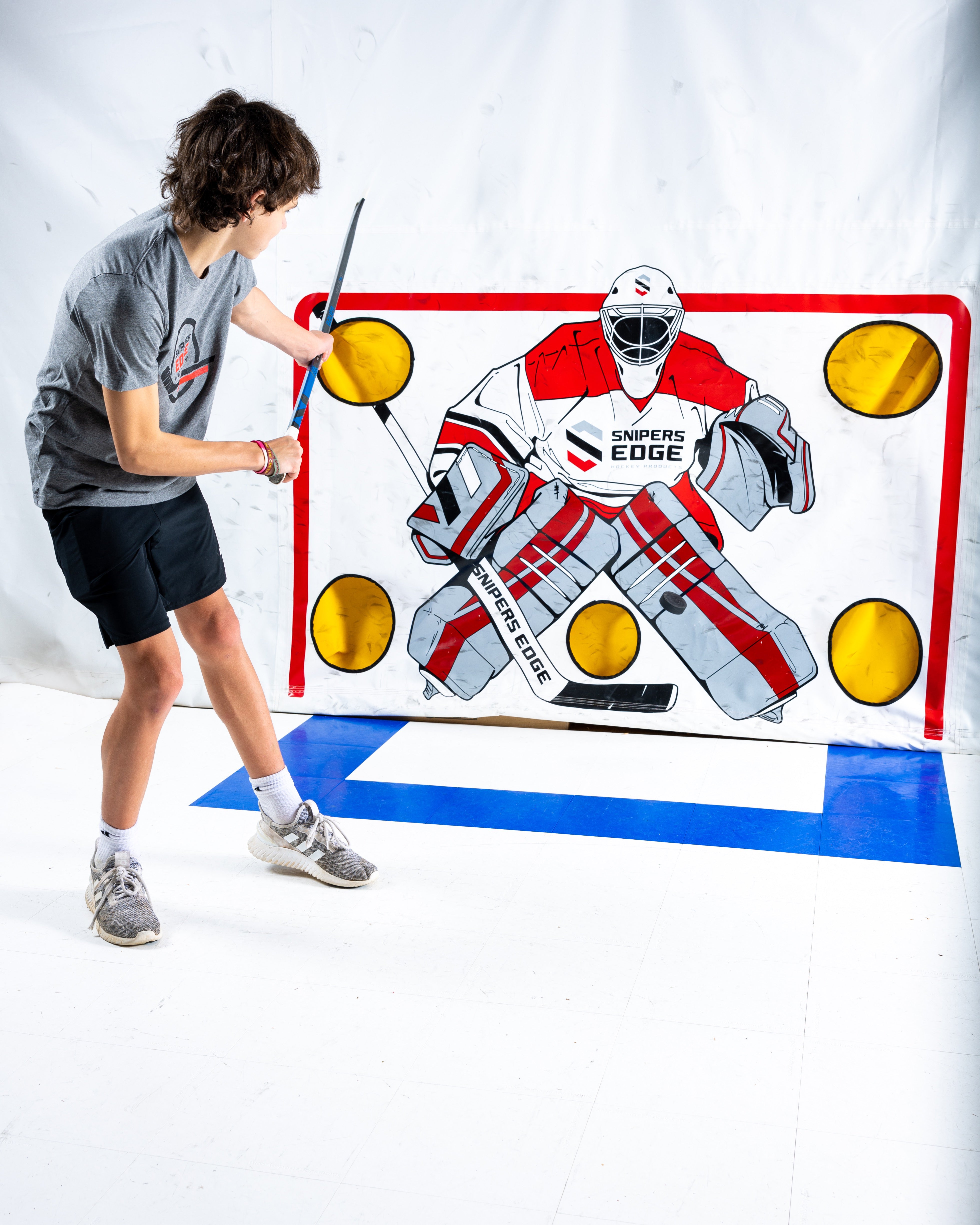Years ago we stumbled across the following graph, published by Ontario Minor Hockey Association, with original stats compiled by Stats LLC over then-recent NHL seasons, entitled “The Science of Scoring”.

During the seasons analyzed, the researchers observed that 55% of NHL goals were scored 20 feet or less from the goal (which means between the goal line and the hash marks)! 73% of goals were scored from within 30 feet (meaning near top of the faceoff circle). 21% of the goals were scored within 10 feet of the goal.
A majority (55-60%) of these close-range goals were wrist shots, followed by backhands with 15-20%, followed by tips/redirects.
So why do we think that is? A few plausible explanations:
- A wrist shot is can be executed while on the move, either while skating or immediately following a stickhandling move around other players
- for most players wristers offer the quickest release.
- For most players this shot have the best aim.
- The closer you are to the net, you can see the open space made available by the goalie, and
- The goalie’s reaction time is compressed
Most long shots end up getting blocked, missing the net or simply being saved, because being far back reduces one’s aim and. A goalie with a clear line of sight can also frequently stop these goals without any challenge.
The major takeaway for us is that if you want to become an effective goal scorer, then you need to get pretty darn good at those close range shots. And the best way to get those repetitions is to shoot pucks at home. Like thousands and thousands of them. Make this a daily and weekly activity. Most advanced mites and above can hit 100-150 shots within just 20 minutes of training, and if you do that 5-6 days a week then by end of summer you’ll have amassed 10,000 shots! Create a competition with your friends over 90 days, let’s say, and winners get ice cream paid for by the others.
No matter the size of your home, nearly everyone can find 10-20 feet in their garage, basement, or outdoor concrete slab, to lay down tiles or a shooting pad, and shoot at a net, shooting tarp, and/or targets, and focus on accuracy, quick release, weight transfer, toe drags and other stickhandling into a shot, deception moves, and others.
Further, alternate your shooting by location (in tight vs further out, left side vs right side vs straight on, forehand vs backhand), so that you build comfort shooting from all those angles. Create that shot variety into your training regime this offseason, and watch your point production take flight.


